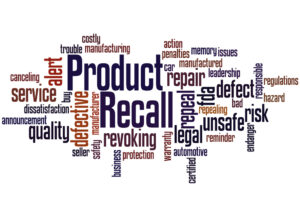When it comes to the legal questions surrounding self driving cars, they are two-fold. First, the question of whether they can be tested currently, and second, when they are ready for consumers, who will be at fault in the case of an accident?
Testing Autonomous Vehicles
In 2017 the House passed the Safely Ensuring Lives Future Deployment and Research In Vehicle Evolution Act, or “SELF DRIVE” Act. This act is currently percolating in the Senate’s Committee on Commerce, Science, and Transportation, but the act if ratified would establish a federal framework for the regulation of self-driving cars. Currently, anyone interested in testing self-driving technology has to apply for exemptions to the National Highway and Traffic Safety Administration’s (NHTSA) federal motor vehicle safety standards, and the agency only grants 2,500 exemptions per year.
The Self Drive Act would increase that cap to 25,000 per year initially, and expand it up to 100,000 annually in three years’ time. These exemptions would be given based on reports proving the test vehicle is, in fact, safer than a human driver. Furthermore, if passed this act would allow all 50 states to initiate their own self-driving technology, as well as allowing them to focus on their roles of registering vehicles, enforcing traffic laws, and managing insurance and liability. However, this act would take a lot of control away from states, giving it to the federal government.
Up to this point, the government has been in charge of the safety of vehicles, while states regulated the safety regarding the operation of vehicles. The National Conference of State Legislatures released a statement about this very dichotomy asking the policy writers to clarify the roles states and the federal government will play.
Until this act is passed it is good to note that testing of self driving cars is permissible as long as a human driver is in the front seat and the pedals and steering wheel are functional for manual control. Our laws are written vaguely enough that the car may be doing the legwork, but a pair of legs need to be present.
For more information about specific state’s legislation please refer to this resource.
The Future of Autonomous Laws
Autonomous cars will not be easy to legalize. Unfortunately, it ultimately comes down to fault, and in the case of self-driving cars, who is at fault? For example, a tire blows out, the system crashes, the computer gets hacked, a bird poos on the sensors— autonomous cars can have accidents too. Too bad we can’t sue birds for our medical costs. Furthermore, is the owner of the vehicle at fault? If one vehicle collides into another, someone has to pay for the damages. (We highly suggest reading the start-up language before pushing “agree” when these cars hit the road.)
It seems that if the car is in control the automaker will be at fault, but big companies are seldom in the business of taking on more liabilities, so this seems unlikely. Furthermore, the law is based on precedent and there is little to no litigation dealing with these self-driving vehicles. Some experts presume the new laws will look more like product liability cases in lieu of at-fault. This means, instead of focusing on the human interactions, in the case of autonomous crashes, lawyers and insurance companies will be focusing on the vehicles themselves, is the registration up to date, have they been updated on time, what is the warranty, etc.
Elon Musk stated about the issue, “If it’s something endemic to our design, certainly we would take responsibility for that. But you know, I think one should view autonomous cars much like an elevator in a building. Does Otis take responsibility for all of the elevators around the world? No, they don’t.”
We don’t have a clear answer on how these cars will affect our tort laws in the future, or even how close autonomous vehicles are to becoming a reality on our roads, but we will keep abreast of the discussions and inform you as they proceed.

Tom Curcio has devoted his career to representing people seriously injured or killed in car, pedestrian, bicycle, and truck crashes, and by dangerous dogs, unsafe products, and premises. He works tirelessly to obtain the compensation his clients are legally entitled to so they may rebuild their lives with dignity. Tom is the co-author of the book Evidence For The Trial Lawyer, and a much sought-after speaker on personal injury, trial practice, evidence, and professionalism. Contact Tom at tcurcio@curciolaw.com.










Comments for this article are closed.